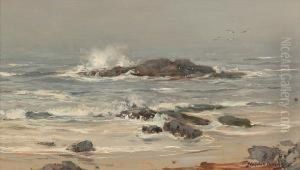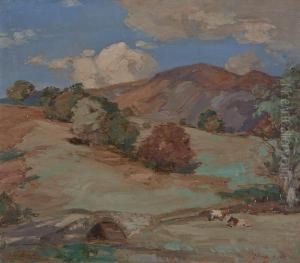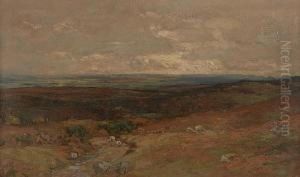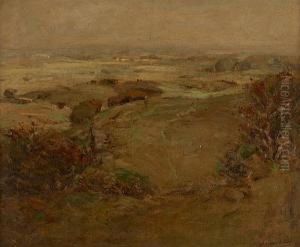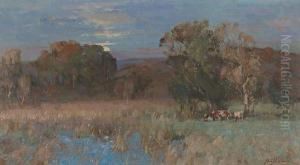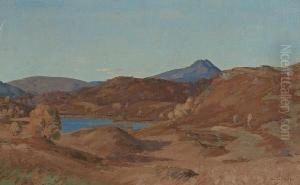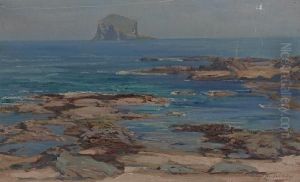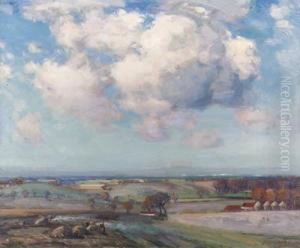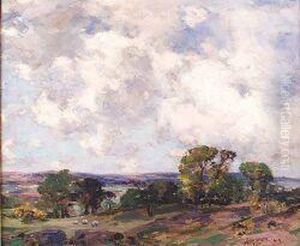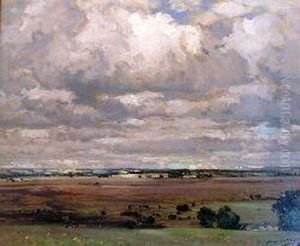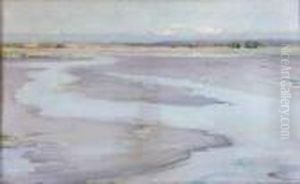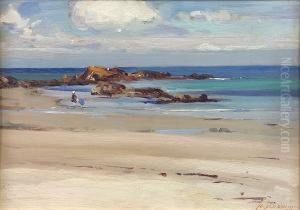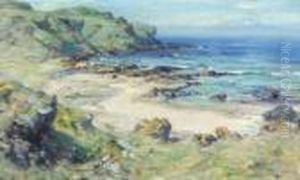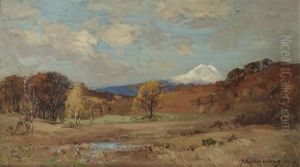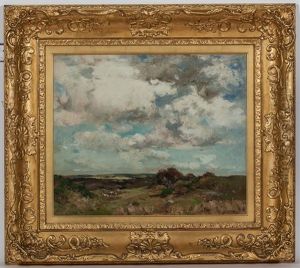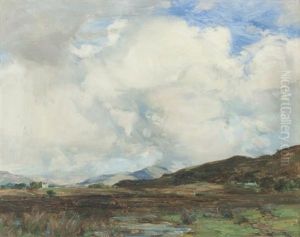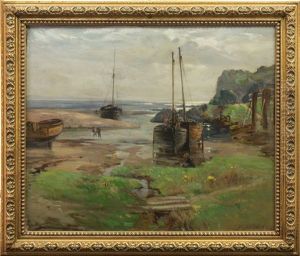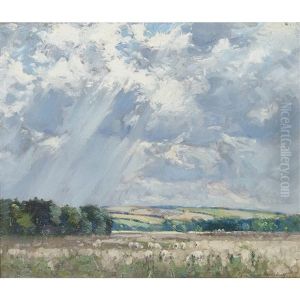John Campbell Mitchell Paintings
John Campbell Mitchell was a Scottish landscape painter born in 1862 in Falkirk. His work is often associated with the Glasgow Boys, a group of artists who sought to break away from the Victorian traditions of painting at the time, promoting a more realistic and natural approach to the Scottish landscape.
Mitchell trained at the Glasgow School of Art and later in Paris, which was a major center for artistic innovation during the late 19th century. His exposure to the works of the Impressionists and post-Impressionists influenced his style, and he became known for his vibrant use of color and light, as well as a distinctive brushwork that added a sense of movement and life to his landscapes.
Throughout his career, Mitchell maintained a focus on the Scottish landscape, capturing its various moods and atmospheres. He painted scenes ranging from the serene to the dramatic, often highlighting the changing seasons and the play of light across hills, valleys, and water.
Mitchell's contributions to Scottish art were significant, as he helped to foster a new appreciation for the country's natural beauty and develop a distinct Scottish approach to landscape painting. Though he was less well-known than some of his contemporaries within the Glasgow Boys, his work nonetheless played a part in the larger movement that sought to redefine Scottish art in the late 19th and early 20th centuries.
John Campbell Mitchell continued to paint and exhibit his works until his death in 1922. His paintings can be found in various public collections, including the National Galleries of Scotland, where his legacy as a key figure in Scottish landscape painting is preserved.




